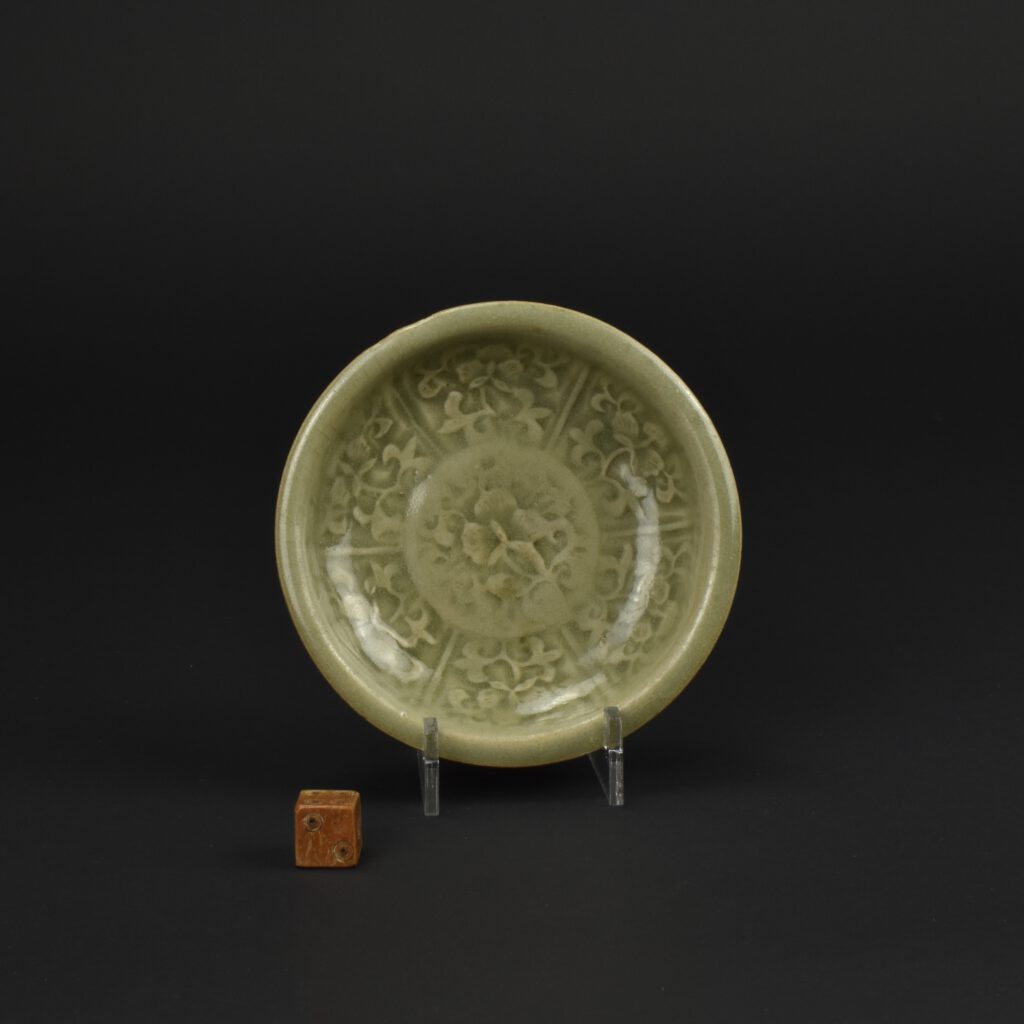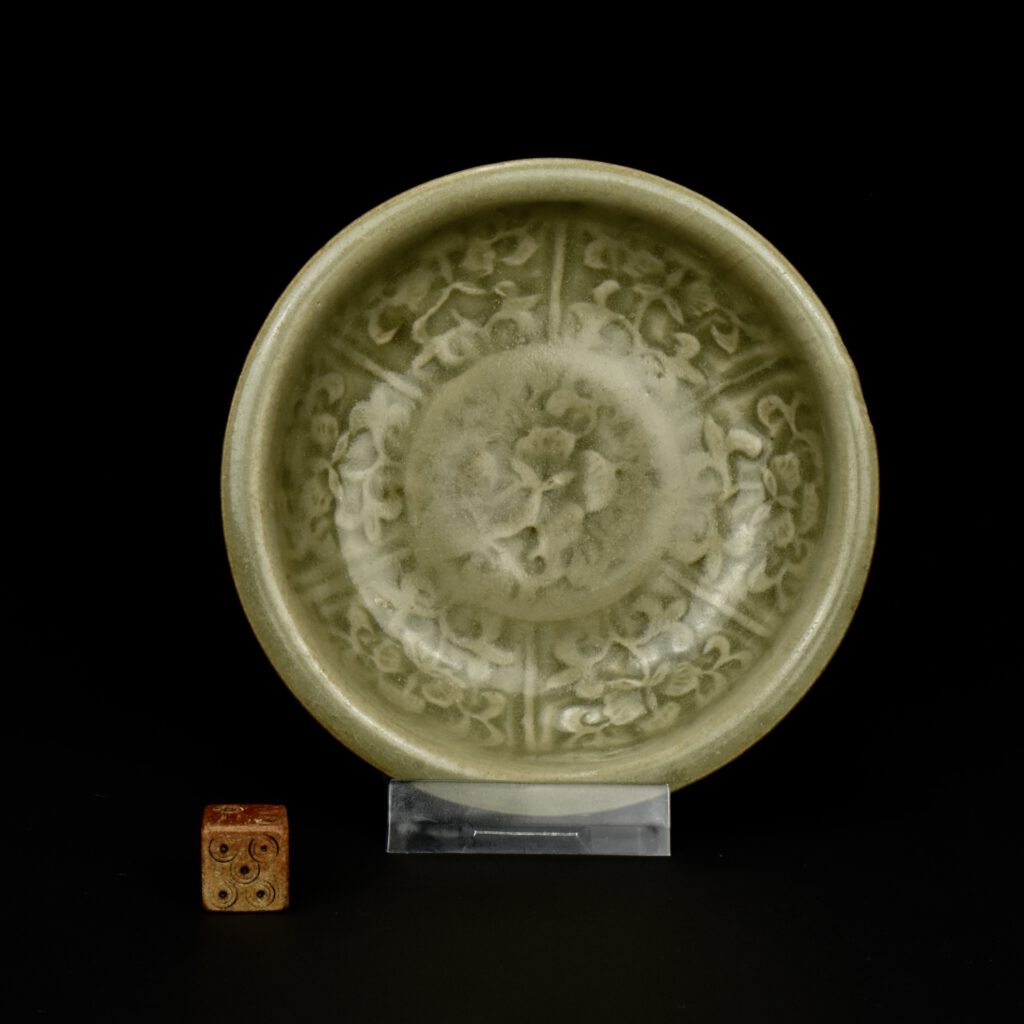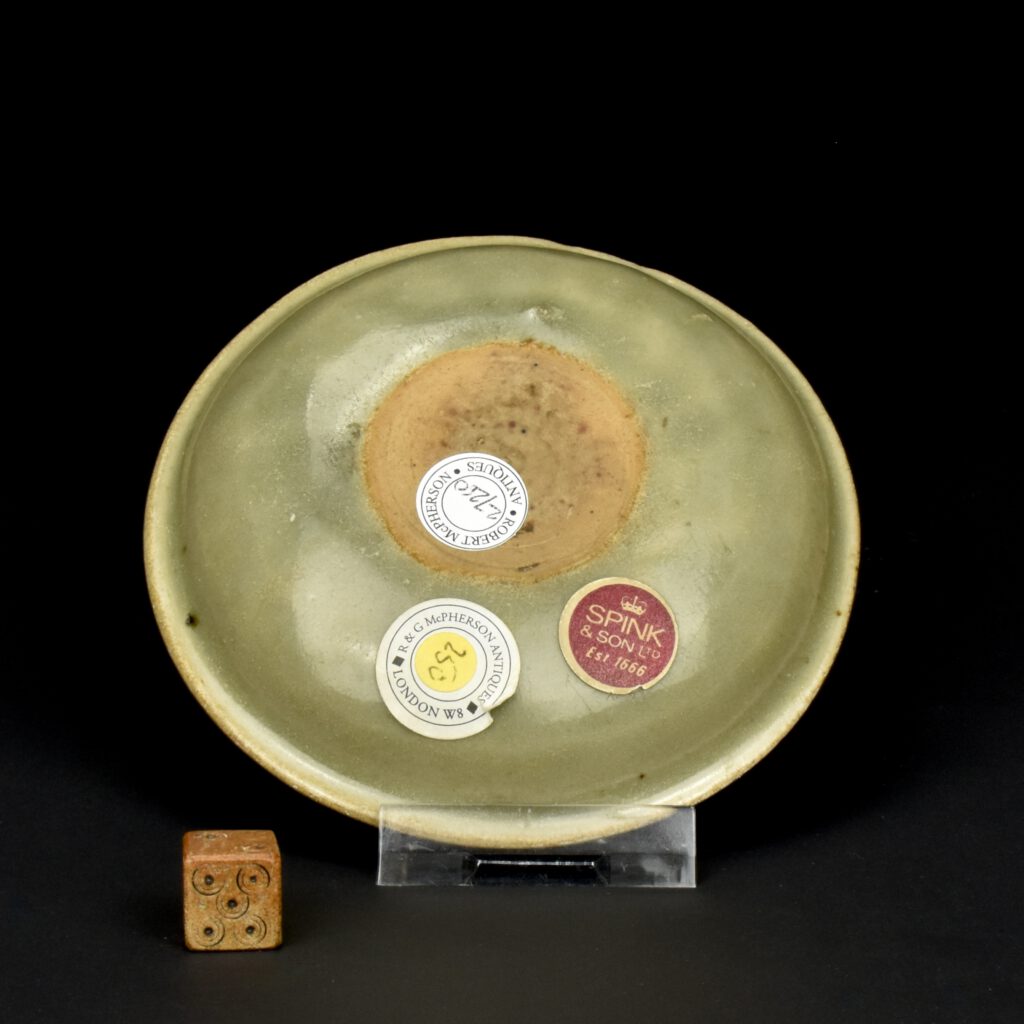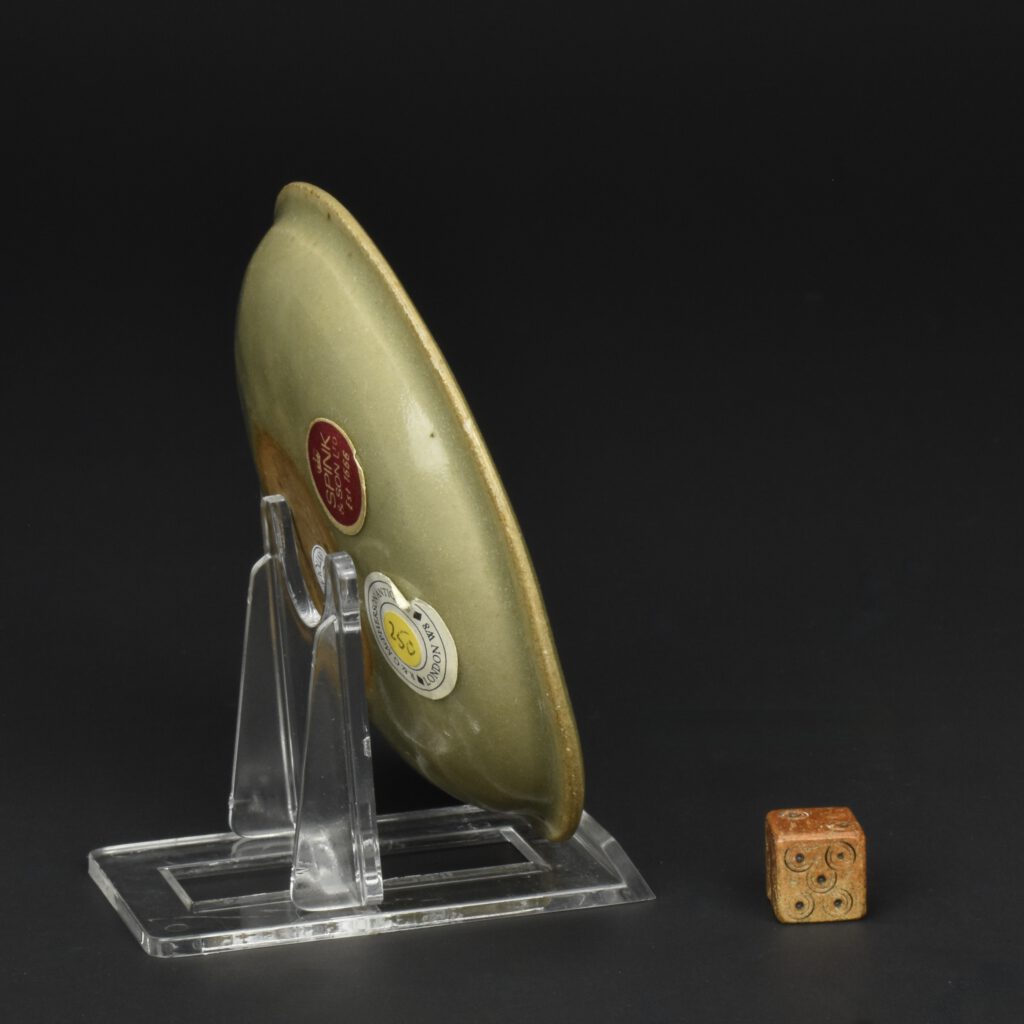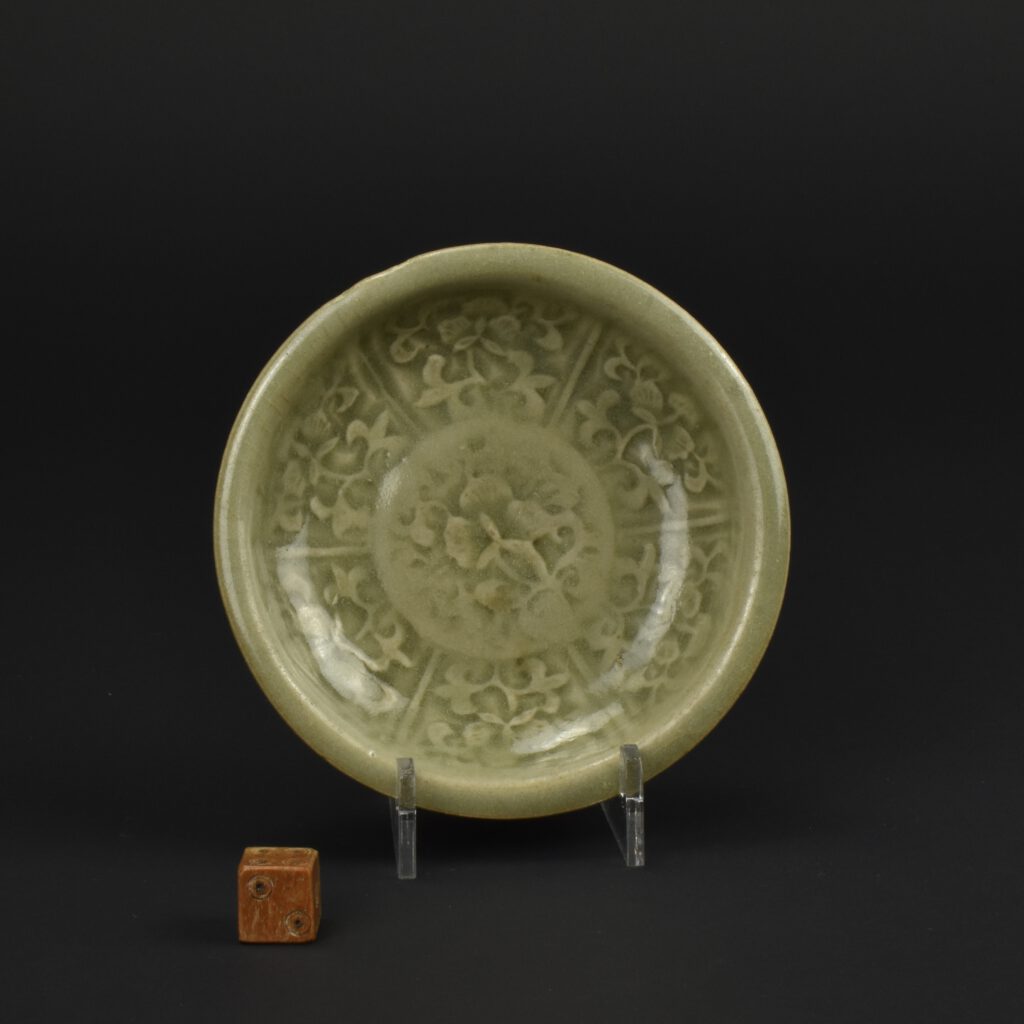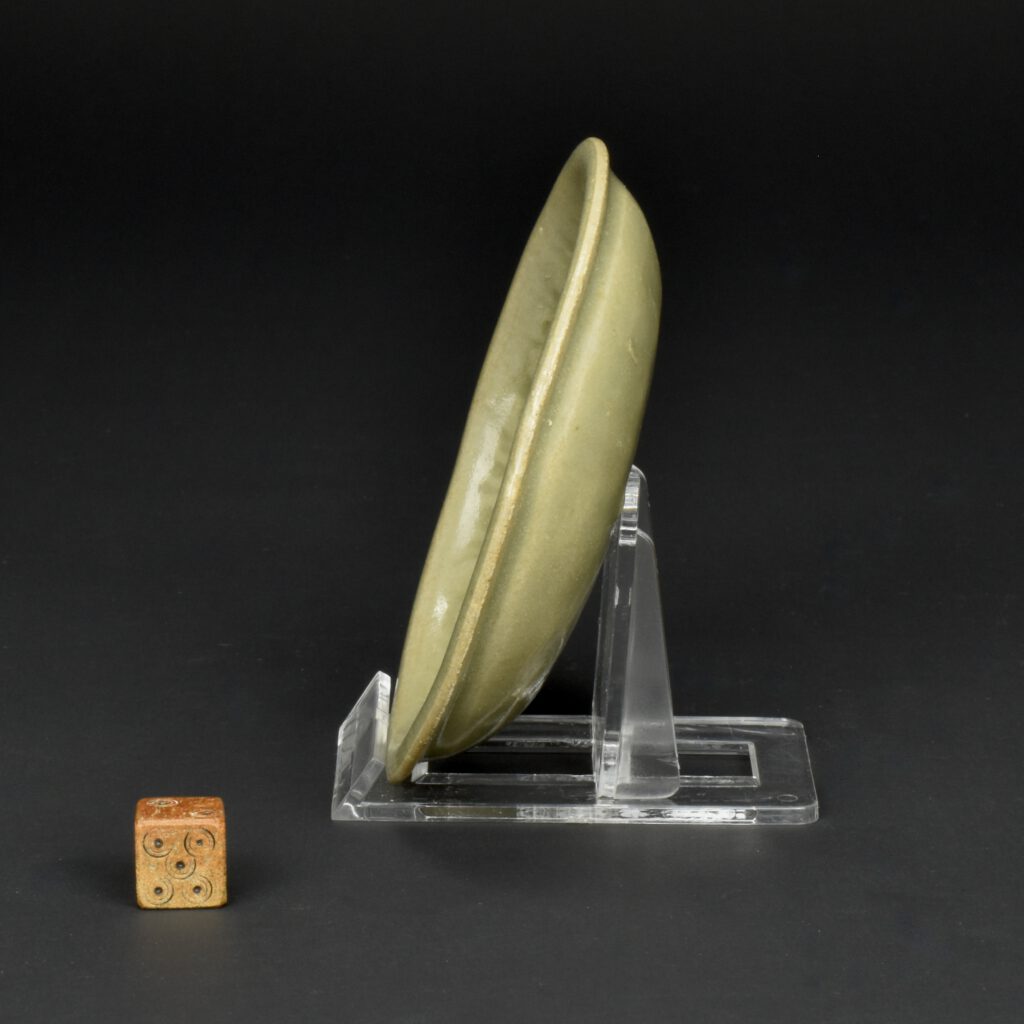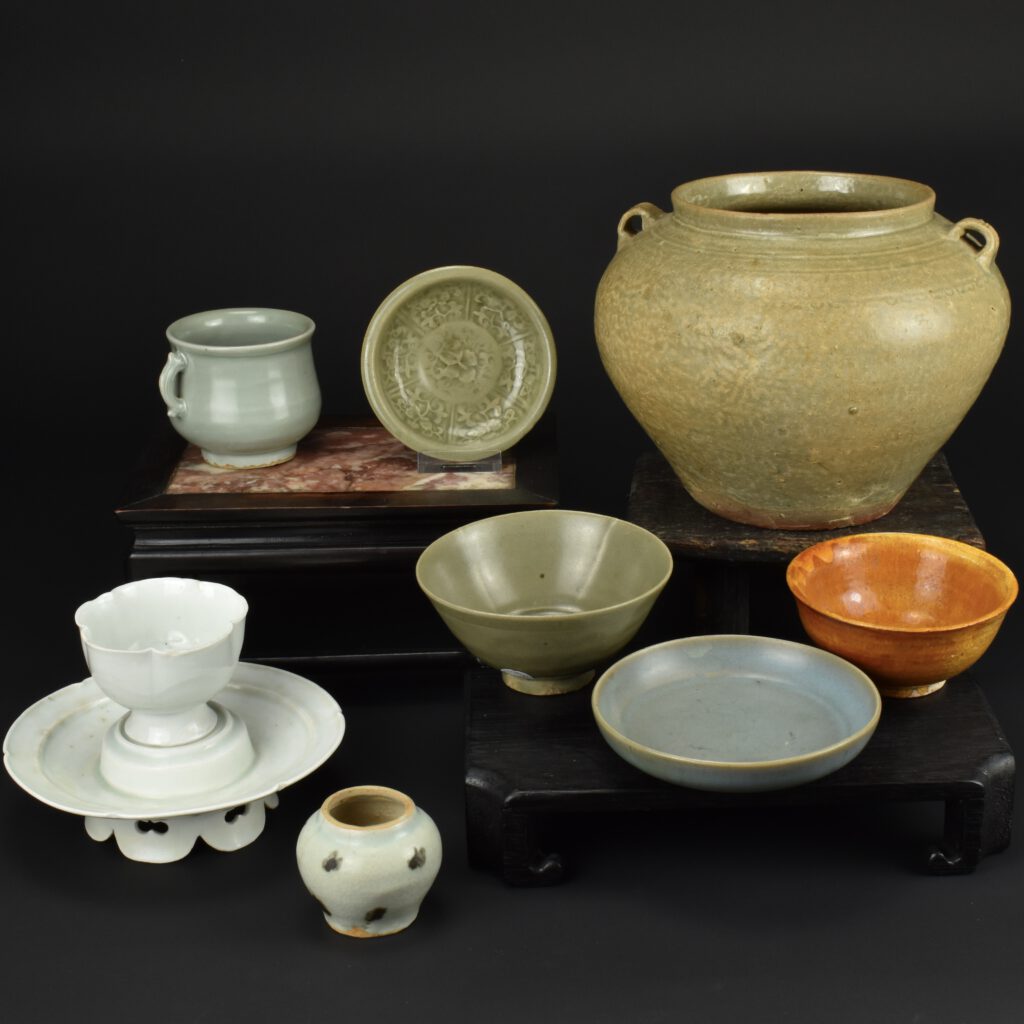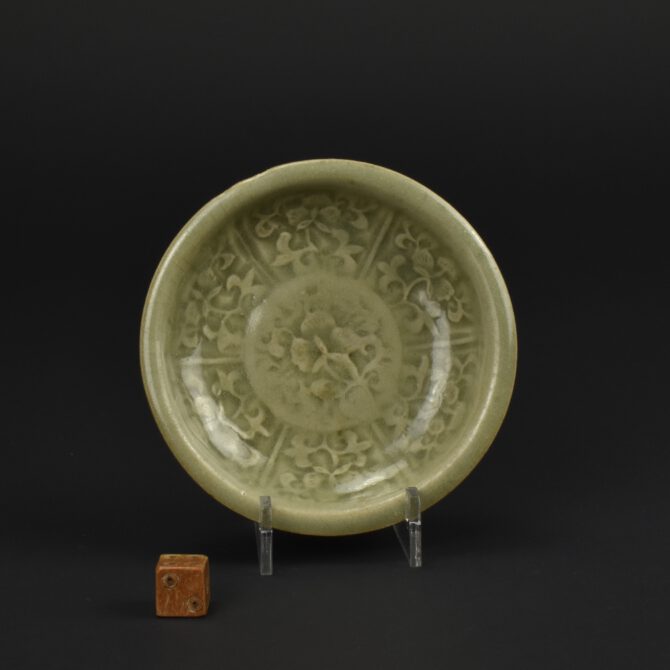
A Small Northern Song Yaozhou Celadon Dish
A Small Celadon Dish from the Yaozhou Kilns in Shaanxi or Henan Province, Northern Song (960 – 1127). This dish sits on a flat circular biscuit base, the moulded decoration to the front comprises of six panels with foliage, and the raised well in the center is similarly decorated. A very similar but slightly larger Yaozhou dish with cut indents, giving the dish the impression of lobes, is in The Percival David Foundation at the British Museum. Regina Krahl illustrates that dish, owned by Sir Percival David (1892-1964) in her wonderful new book Sky Blue, Winter Green, Moon White : Five Hundred Years of Excellence at Yaozhou published 16th June 2023 (see References).
For a very Yaozhou fragment with perhaps the same design, found in Siraf, a port town in Iran, now in the British Museum see https://www.britishmuseum.org/collection/object/W_2007-6001-5610
See Below For More Photographs and Information.
SOLD
- Condition
- In excellent condition, two minute glaze frits to the back of the rim, very minor wear and a small area of light crazing.
- Size
- Diameter 9.6 cm (3 3/4 inches).
- Provenance
- Spink, London. In its heyday Spink lent 6 items to the Royal Academy Exhibition of 1935-1936. See Provenance, Collectors, Dealers & Scholars : Chinese Ceramics in Britain & America (Roy Davids, Dominic Jellinek, Privately Printed, 2011. ISBN 978-0-9570148-0-0). Asian Gallery. Nicholas de la Mare Thompson (1928-2010) purchased 30th of September 1996.
- Stock number
- 27260
- References
- A very similar but slightly larger Yaozhou dish with cut indents, is in The Percival David Foundation at the British Museum. Regina Krahl illustrates the dish belonging to Sir Percival David (1892-1964) in her book - Sky Blue, Winter Green, Moon White : Five Hundred Years of Excellence at Yaozhou, Catalogue of the Shang Shan Tang Collection ( Regina Krahl, Shan Shan Tang Art Institute. ISBN 978-988-76089-0-5) page 149 object 63
Information
Yaozhou Celadon :
Yaozhou Celadon ware comes in many forms, but small crisply moulded or carved bowls were a popular product, as were miniature press-moulded figures or animals, toys and everyday utensils. The Yaozhou kilns main production at Shaanxi was celadon, but they also produced black and brown wares as well. Song Yaozhou glazes are rather different to both earlier and later Chinese Celadons. Later celadons from Longquan of the Yuan and Ming Dynasties have a very thick rich glaze suffused with bubbles throughout, these diffuse the light hitting the glaze, creating a very soft rich sheen. Yaozhou Celadons have a thinner glaze with smaller bubbles. Yaozhou celadons have a more obvious green than earlier wares but the thinness of the glaze means that the ceramic body is far more likely to be visible than on Longquan celadons. The colour of Yaozhou celadons tends to be more to wards olive green rather than the Longquan celadon which is normally richer and nearer a true green.
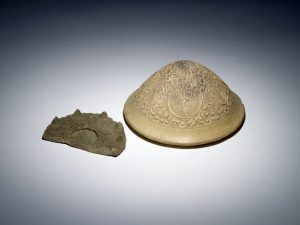
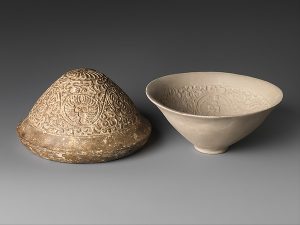
China, Northern Song dynasty (960–1127)
Stoneware; Diam. 5 1/2 in. (14 cm)
The Metropolitan Museum of Art, New York, Gift of C. T. Loo, 1916 (16.149.1)
http://www.metmuseum.org/Collections/search-the-collections/49202
Celadon Ware :
Celadon is a term used to describe several types of Chinese stoneware and porcelain, as well a ceramics from other countries, notably from Korea and Japan. The term is a imprecise one, applying to various types of green glazed ceramics, but not all ceramics with green glazes, there are several wares that have a green glaze that are not refereed to as celadon. For example Green Jun and Ge Ware. For this reason there has been a move to try to clarify the situation by using the term `Green Ware`. But for now Celadon is a more familiar and therefore useful term. The origins of the term Celadon are not clear, one theory is that the term first appeared in France in the 17th century and that it is named after the shepherd Celadon in Honoré d`Urfé`s French pastoral romance, L`Astrée (1627), who wore pale green ribbons. (D`Urfe, in turn, borrowed his character from Ovid`s Metamorphoses.) Another theory is that the term is a corruption of the name of Saladin, the Ayyubid Sultan, who in 1171 sent forty pieces of the ceramic to Nur ad-Din, Sultan of Syria. Yet a third theory is that the word derives from the Sanskrit sila and dhara, which mean “stone” and “green” respectively. Celadon ware originated in Zhejiang Province in the Eastern Han Dynasty, however green monochrome glazes can be found on stoneware much before that date. Zhejiang is were the famous Longquan Celadons were made but Celadon wares were also produced at Jiangsu, Hubei, Hunan and Jiangxi. The production of Celadon Ware required a reducing atmosphere of around 1300 degrees C., the colouring agent was a mixture of iron oxide and titanium. The glaze was applied very thickly, and was full of tiny bubbles which defuse the light giving the appearance of richness and softness.
